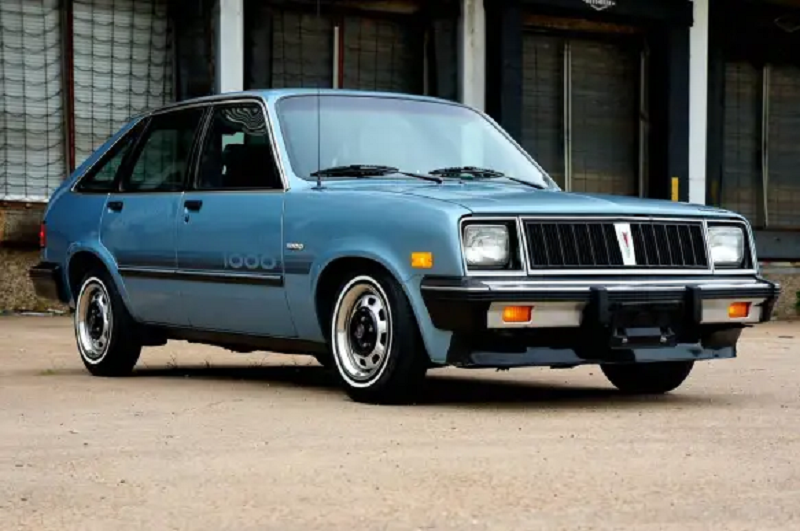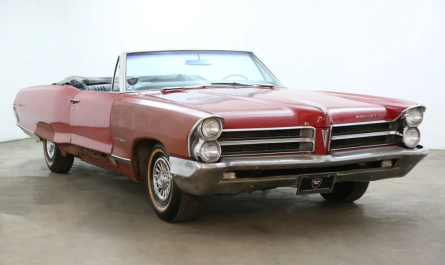Introduction:
Though many automobile aficionados outside of Canada may not immediately recognize the name, those who value vintage compact cars have a particular place in their hearts for the Pontiac Acadian. Produced between the early 1960s and the late 1970s, this car was constructed in Canada and represents a time when automakers produced distinctive models to appeal to local markets. Frequently eclipsed by its American equivalents, the Pontiac Acadian provides an intriguing look into the Canadian history of General Motors (GM) and the automobile industry during that century.

Read more: Pontaic 6000 Price, Specs & Review
Origins and Background:
Early in the 1960s, General Motors of Canada set out to design a compact automobile specifically for the Canadian market, which is how the Pontiac Acadian tale began. At the time, GM wanted to provide a car that would appeal to drivers in Canada, as small automobiles were becoming more and more popular. In 1962, the Acadian was released in response to this increasing demand.
The Acadian people of the Maritime provinces, in particular, have a strong sense of heritage and connection to the French-speaking parts of Canada, which is why the name “Acadian” was chosen. This homage to culture helped make the automobile more likable to Canadian consumers, which paved the way for its success.
The Early Years: 1962-1965:
Launched in 1962, the first generation of Pontiac Acadian was built on the Chevrolet Chevy II chassis. The Acadian, which offered Canadian consumers a small car with a distinctly Pontiac flair, was basically a rebadged Chevy II. There were three different body types to choose from: station wagon, coupe, and sedan.
Early Acadian vehicles were powered by a variety of inline-four and inline-six engines, which offered a trade-off between performance and fuel economy. The vehicle soon gained popularity because it was positioned as an economical and useful choice for Canadian families.
Design and Features:
The Pontiac Acadian‘s design combined elegance and simplicity. Its exterior had a classic 1960s appearance with its modest grille, clean lines, and discreet chrome embellishments. Consumers on a tight budget were drawn to the Acadian’s simple, comfortable interior with standard features.
The Acadian’s tiny size, which was perfect for maneuvering Canada’s city streets while still providing enough room for a small family, was one of its main selling features. The car’s efficiency was further enhanced by its lightweight design, which attracted buyers at a period when fuel economy was becoming more and more crucial.
Variants and Trim Levels:
The Pontiac Acadian was offered in multiple trim levels during its manufacturing run, each of which catered to distinct consumer tastes. These trim levels included the base model, the Invader, and the top-tier Canso model.
Particularly noteworthy were the Canso’s extra amenities and plusher interior. Options including bucket seats, better upholstery, and more chrome trim were offered. For those who want a little bit more performance from their small car, the Canso also came with more potent engine options.
The Acadian Beaumont: A Notable Offshoot:
The Acadian Beaumont is a new Acadian variation that Pontiac debuted in 1964. Rather of going up against tiny automobiles, the Beaumont was an Acadian redesigned to be more luxurious. Because it was built on the same basis as the Chevrolet Chevelle and had a more potent V8 engine option, performance fans favored it.
The Beaumont swiftly established a reputation for combining performance and style, and it was offered in two- and four-door body styles. Even as it expanded beyond its modest origins, the Acadian’s position in the Canadian auto industry was cemented by the Beaumont’s success.
The Evolution: 1966-1971:
The Pontiac Acadian had multiple revisions as the 1960s went on to accommodate shifting consumer preferences and technical developments. The second generation had a more aggressive attitude and a more current look when it was released in 1966.
Larger and more potent engines, including V8 possibilities, were introduced at this time, expanding the available engine options. Because of this, the Acadian gained a sportier edge and attracted a wider spectrum of customers. The Acadian stuck to its original purpose of serving as a useful, reasonably priced car for Canadian households in spite of these modifications.
Acadian in the Muscle Car Era:
The Pontiac Acadian was not exempt from the muscle car craze that dominated the late 1960s and early 1970s. Although the Acadian was not a muscle vehicle per such, the Beaumont version was very popular during this time. Due to its V8 engine and performance-oriented styling, the Beaumont gained popularity among Canadian drivers who desired the flair and power of a muscle vehicle without the American emblem.
Particularly noteworthy was the Beaumont SS, which provided remarkable performance along with eye-catching looks. It stood out in the Canadian muscle car scene thanks to its aggressive SS badging, sport-tuned suspension, and potent engine options.
The Final Years: 1972-1971:
The car industry was evolving by the early 1970s. The Pontiac Acadian was designed to meet the growing demand for cars that were smaller and more fuel-efficient. The last generation of Acadian, which was manufactured between 1971 and 1971, was a reflection of these changes in consumer tastes.
The final Acadian models were smaller and had modernized styling that matched the fashions of the 1970s. However, the Acadian faced difficulties due to the popularity of imported automobiles and the rise of small cars. Because of this, GM made the decision to withdraw the Acadian after the 1971 model year, bringing an end to this iconic Canadian vehicle.
Legacy and Impact:
The Pontiac Acadian is no longer manufactured, but collectors and fans of vintage automobiles still hold fond memories of it. The Acadian represents a period in which automakers customized their products for particular markets, producing distinctive cars that represented the tastes and cultures of their customers.
Being one of the few vehicles made expressly for Canadian markets, the Acadian is also regarded as a unique chapter in Canadian automotive history. The way contemporary automakers approach regional markets and create cars that suit local tastes is still influenced by it.
Collecting and Restoring the Pontiac Acadian:
The Pontiac Acadian has grown in popularity recently, especially among Canadian antique vehicle collectors. Given that Acadian automobiles are somewhat uncommon and represent a special segment of automotive history, restoring one can be a fulfilling experience.
Finding genuine parts is crucial when restoring an Acadian because it can significantly increase the vehicle’s worth and authenticity. A lot of collectors also value the Acadian’s straightforward design, which makes it simpler to work on than more intricate cars.
Read more: Pontaic 2000 sunbird Specs, Review & History
Acadian in Popular Culture:
The Pontiac Acadian has been featured in Canadian popular culture, although not having as much fame as some other vintage vehicles. The Acadian has appeared in a number of Canadian TV series and movies, frequently serving as a nostalgic nod to the 1960s and 1970s.
The car’s connection to Canadian identity has also been examined in literature and art, where it is occasionally portrayed as a symbol of the country’s independence and inventiveness. Because of its understated yet unique style, the Acadian has become a revered symbol of Canadian auto history.
Comparisons with American Counterparts:
Due to its many similarities, the Pontiac Acadian and its American equivalent, the Chevrolet Chevy II, are frequently compared. But the Acadian was distinct in a few important ways, especially when it came to design and positioning in the market.
With trim levels and choices catered to Canadian tastes, the Acadian had a more distinct character in Canada than the Chevy II, which was sold as an affordable compact car in the United States. Because of its association with the Pontiac brand, the Acadian also possessed a more premium image, making it attractive to those seeking a little more sophisticated vehicle than the Chevy II.

The Role of GM Canada:
A key factor in the creation and popularity of the Pontiac Acadian was General Motors of Canada. One of GM Canada’s most popular attempts in its lengthy history of building automobiles tailored for the Canadian market was the Acadian.
The way GM Canada developed and marketed the Acadian was a reflection of its in-depth knowledge of Canadian consumers. GM Canada was able to establish a niche for itself in the cutthroat auto industry by providing a vehicle that catered to the particular requirements and tastes of drivers in Canada.
The Acadian’s Place in Pontiac’s Lineup:
The Acadian held a special place in the larger Pontiac portfolio. In the US, Pontiac was well-known for producing bigger, more potent cars; yet, in Canada, Acadian offered a more compact, more affordable alternative for consumers. With more products to choose from, Pontiac was able to appeal to a larger market, especially in areas where small automobiles were in high demand.
The Acadian’s popularity also proved that region-specific models could be sold; Pontiac and other GM brands would investigate this tactic further in the years to come.
Conclusion:
Although the Pontiac Acadian may not be as well-known as some other vintage vehicles, it has had a significant influence on Canadian automotive history. The Acadian, being a car made only for Canada, is a special chapter in the history of General Motors and the auto industry as a whole. Many people cherished it as a beloved car because of its unique Canadian identity, affordability, and practicality; collectors and enthusiasts still celebrate it today.
The Pontiac Acadian is an intriguing car to investigate, whether you’re a fan of vintage automobiles or just curious about Canada’s automotive history. Its heritage serves as a reminder of an era in which automakers designed cars with a greater regional focus, making them genuinely relevant to the people for whom they were intended.


